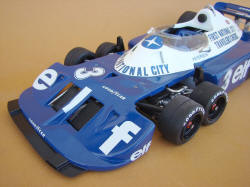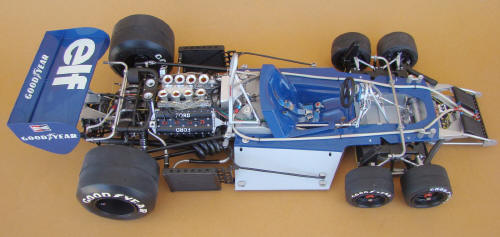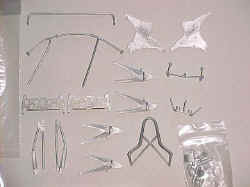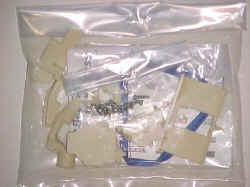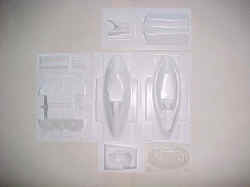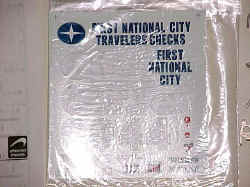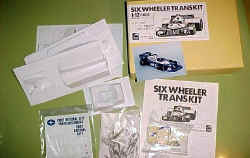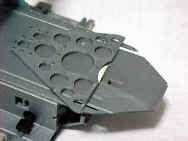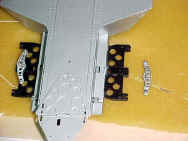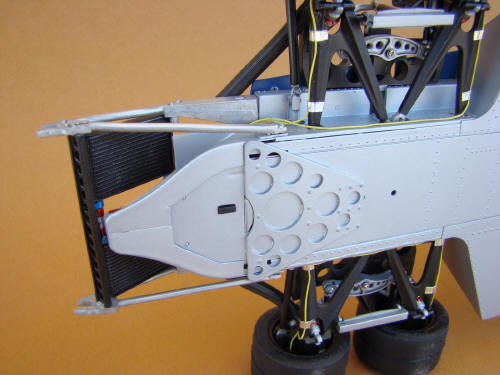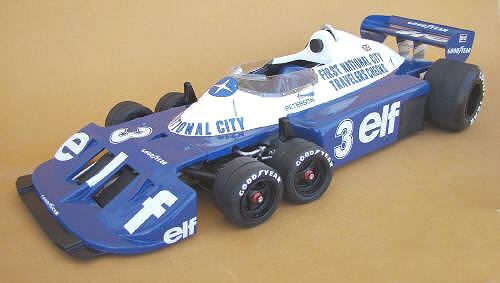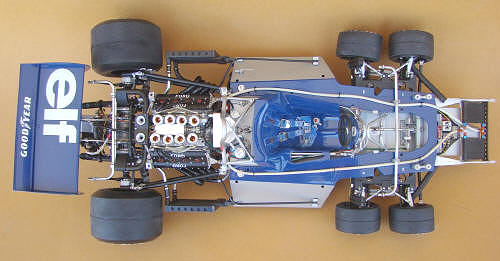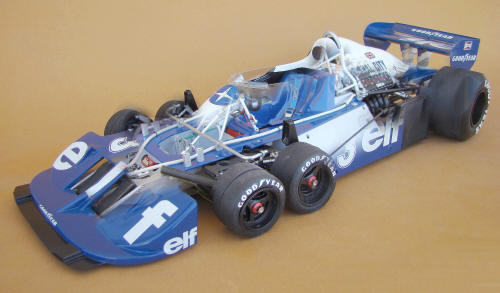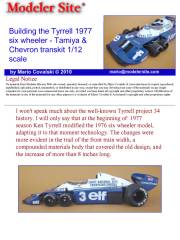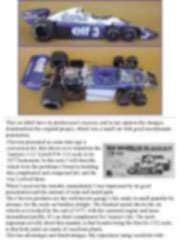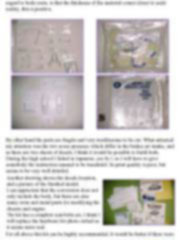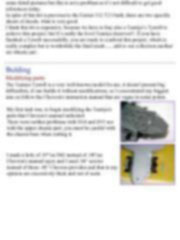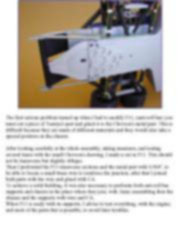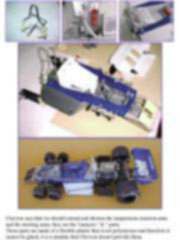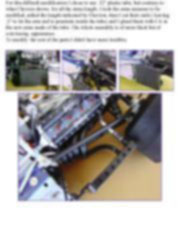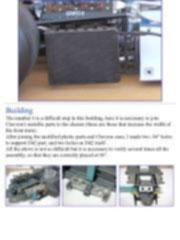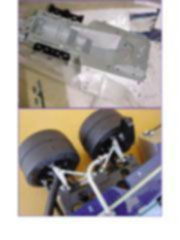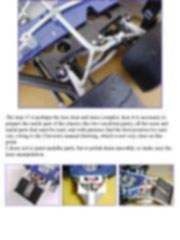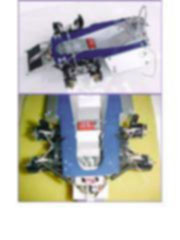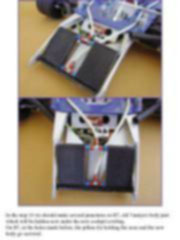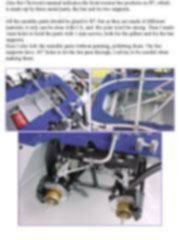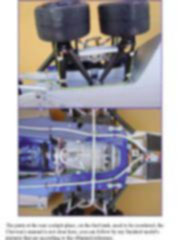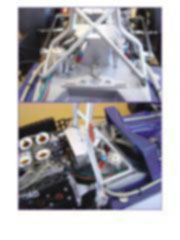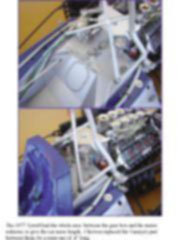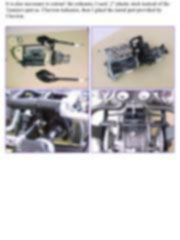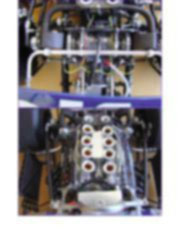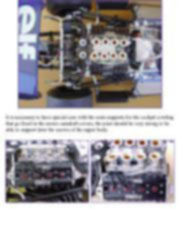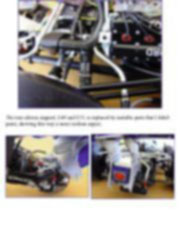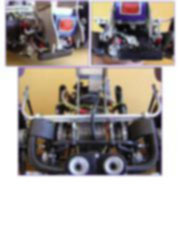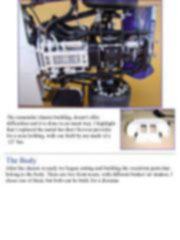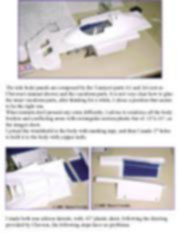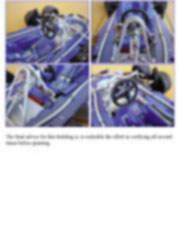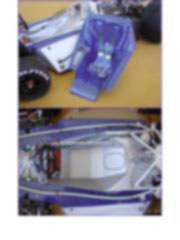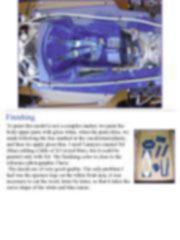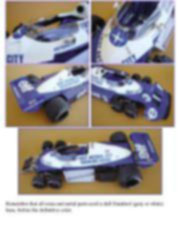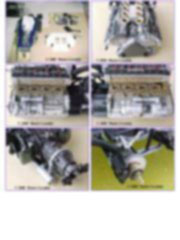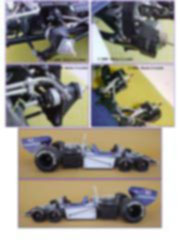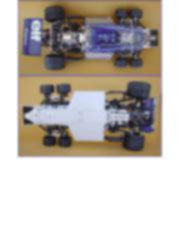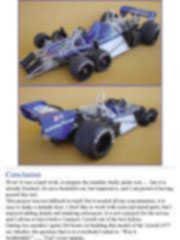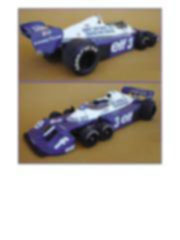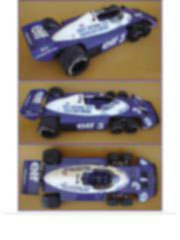Legal Notice No material from Modeler Site any Web site owned, operated, licensed, or controlled by Mario Covalski & Associated may be copied, reproduced, republished, uploaded, posted, transmitted, or distributed in any way, except that you may download one copy of the materials on any single computer for your personal, non-commercial home use only, provided you keep intact all copyright and other proprietary notices. Modification of the materials or use of the materials for any other purpose is a violation of Mario Covalski & Associated's copyright and other proprietary rights. Read More here > Legal notice I won't speak much about the well-known Tyrrell project 34 history. I will only say that at the beginning of 1977 season Ken Tyrrell modified the 1976 six wheeler model, adapting it to that moment technology. The changes were more evident in the trail of the front train width, a compounded materials body that covered the old design, and the increase of more than 8 inches long.
This car didn't have its predecessor's success, and in my opinion the changes, denaturalized the original project, which was a small car with good aerodynamic penetration.
When I received the transkit, immediately I was impressed by its good presentation and the amount of resin and metal parts.
By other hand the parts are fragile and very troublesome to be cut. What attracted my attention was the two noses presence which differ in the brakes air intake, and as there are two sheets of decals, I think it would be possible to build both.
For all above this kit can be highly recommended, It would be better if there were some detail pictures but this is not a problem as it’s not difficult to get good references today. In spite of this kit is previous to the Ferrari 312 T2 I built, there are two specific sheets of decals, what is very good. Building Modifying parts The Tamiya Tyrrell is a very well-known model for me, it doesn't present big difficulties, if one builds it without modifications, so I concentrated my biggest aim on follow the Chevron's instruction manual that are vague in some points.
Esta Nota es ofrecida en formato PDF, el cual puede ser leído o impreso usando el Acrobat reader, contacte a nuestro webmaster > Aquí Incluye más de 98 imágenes, aquí solo mostramos las paginas de texto.
This note is offered in PDF format to be read or printed using Acrobat reader, contact our webmaster > Here Includes more than 98 pics, here we show only the text pages.
Support us ordering our notes in PDF > Here |

